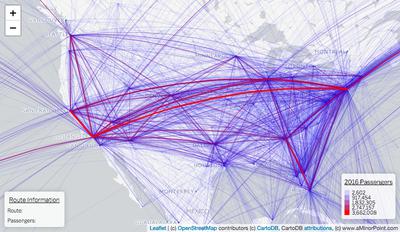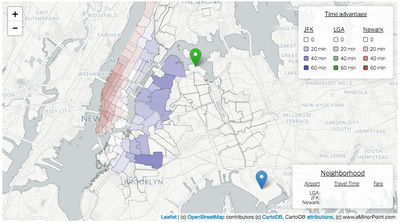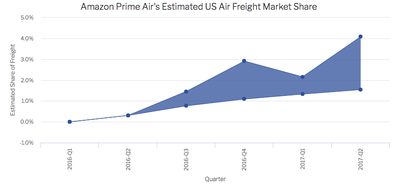Uber on the Verge of Overtaking Taxis in New York City - A Look at Trip Data Through June 2017
Uber and Lyft together already surpass yellow and green taxis
Uber and other ride-hailing companies are on the verge of overtaking traditional taxis in New York City. The NYC Taxi and Limousine Commission, which collects data on trips, recently released new trip data up through June 2017. It reveals that Uber accounted for 33.7% of trips in June, compared to yellow taxis with 36.5% of trips. If you combine Lyft with Uber, the two companies together provided 42.4% of the trips, exceeding the share from yellow and Boro (green) taxis at 40.2%.
Because the data is released with a lag, it's possible that by the end of October, Uber will be the largest provider of car rides in New York City.
The data also suggests Uber, Lyft, and others are growing not necessarily at the expense of traditional taxis. Instead, the overall size of the market is growing. In June 2013, the total rides in the city (based on yellow taxi data) was 14.4 million. By June 2017 total rides had increased to 23.4 million.
Note that when looking at the charts, the Taxi and Limousine Commission didn't start publishing the ride-hailing data on a regular basis until the start of 2015.
How do trips break down by borough?
Ridership at the city level hides some interesting insights at the borough level. The charts below are based on the pickup location of trips. In Manhattan, the presence of ridesharing companies doesn't appear to be significantly expanding the market. Total monthly ridership is up from about 12.9 million rides in June 2013 to about 15.4 million rides in June 2017. In this case, riders are switching from yellow taxis to mostly Uber, though both Lyft and Via are approaching 1 million rides per month.
The situation is different in the other boroughs where the ride-hailing companies are greatly expanding the marketplace for car rides. In Brooklyn, yellow taxi trips totaled 402,000 in June 2013 just before green taxis started operating. In June 2016, the total reached 3.7 million with Uber and Lyft accelerating the growth profile.
A similar trend is playing out in Queens (note that rides that originate at either LaGuardia Airport or JFK Airport are excluded from the totals as airports are a bit of a unique situation). The same growth trends hold for the Bronx and Staten Island, though on smaller scales. It's pretty clear that ride-hailing has been a boon for people living in the outer boroughs.
A final point on the borough data: Not every trip contained valid location data. There are millions of trips that are unassigned. Most of these trips are from other "for hire vehicle" (FHV) companies (think traditional black car services). However, Gett and June (which was recently acquired by Gett) also fall into this bucket.
Airport trips
Car rides from the airports are a bit unique. For example, they typically represent high-value rides. For instance, yellow taxi trips that start at JFK Airport only represent about 1.9% of trips during any given month. But those trips account for about 6.8% of the total fares. The situation is similar with LaGuardia Airport. This is what leads taxi drivers to wait for hours to pick up people at the airports (in the case of O'Hare Airport, it makes economic sense to wait in the queue).
Looking at the data, yellow taxi trips from each airport have been relatively steady since the arrive of Uber, Lyft, and other ride-hailing companies. The arrival of the newcomers seems to be expanding the market for people taking rides from the airport at a time when passenger traffic at each airport is growing. About 26.7 million passengers went through LaGuardia in 2013 compared to 29.8 million in 2016. At JFK Airport, passenger traffic grew from about 50.5 million in 2013 to about 59.1 million in 2016. That's a combined 15% increase in potential people that need a ride from the airport, but the growth rate in rides is outstripping the growth rate in airport passenger traffic.


